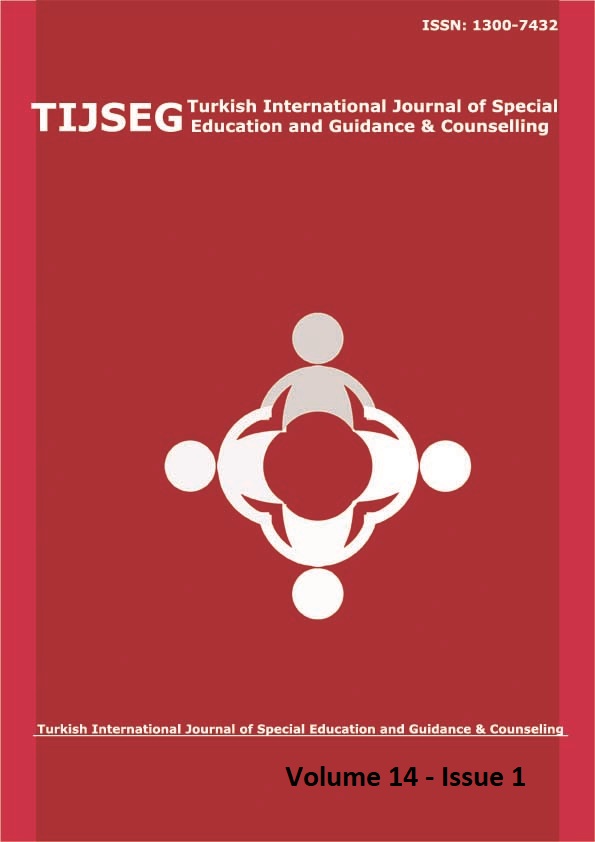THE ENVIRONMENTAL ACCESSIBILITY TO INCLUSIVE EDUCATION PRACTICE FOR PERSON WITH PHYSICAL DISABILITY
Abstract
This study examines Dalkoch Primary School's environmental accessibility to inclusive practices for students with physical disabilities. Its goal is to evaluate the physical surroundings of the school in order to pinpoint any obstacles to inclusion. To comprehend accessibility potential and limitations, a mixed-methods design is used, includes a case study approach. Purposive and random samplings are used to choose participants, who include teachers, school administrators, and students with physical disabilities, in order to reflect a range of viewpoints. Surveys, semi-structured interviews, focus groups, and in-person observations of the school's facilities and classrooms are all used in the data collection process. Accessibility levels are assessed using statistical analysis of survey quantitative data, and major obstacles and enablers are identified through theme coding of qualitative data. Strengths and places for growth are identified by the findings, which include a lack of suitable infrastructure, a lack of inclusive practice training for teachers, and a need for a better understanding of the unique requirements of each student. Enhancing environmental accessibility through universal design principles, stronger support systems, and enhanced teacher training is what study suggests. Subsequent investigations ought to examine how these enhancements affect student performance and accessibility best practices in comparable learning environments.
Keywords: Environmental, accessibility, inclusive education practice, student, physical disability.
REFERENCES
Ababa, A., & Tesfaye, E. K. (2024). Factors affecting teachers ’ practices of inclusive instruction al strategies in teaching students with visual impairments in schools. 24(3), 42–56.
Abebe, S. M., Shitu, K., Liulseged, T., Abera, M., Fentie, M., Mekonnen, F., Batorowicz, B., Xu, X., Efedi, N. A., & Aldersey, H. M. (2023). Understanding Barriers and Facilitators to Inclusive Education for Grade 7-9 Students with Disabilities in Ethiopia and Ghana: A Qualitative study. Disability, CBR and Inclusive Development, 34(1), 6–26. https://doi.org/10.20372/dcidj.671
Barber, W., & Barber, W. (2018). Inclusive and accessible physical education : rethinking ability and disability in pre-service teacher education disability in pre-service teacher education. 3322. https://doi.org/10.1080/13573322.2016.1269004
Engelbrecht, P., Savolainen, H., Nel, M., Koskela, T., & Okkolin, M. A. (2017). Making meaning of inclusive education: classroom practices in Finnish and South African classrooms. Compare, 47(5), 684–702. https://doi.org/10.1080/03057925.2016.1266927
Erkilic, M., & Durak, S. (2013). Tolerable and inclusive learning spaces : an evaluation of policies and specifications for physical environments that promote inclusion in Turkish Primary Schools. 3116. https://doi.org/10.1080/13603116.2012.685333
Fitriana, R. (2014). No 主観的健康感を中心とした在宅高齢者における 健康関連指標に関する共分散構造分析Title. Procedia Manufacturing, 1(22 Jan), 1–17.
Moriña, A., & Morgado, B. (2018). University surroundings and infrastructures that are accessible and inclusive for all : listening to students with disabilities. Journal of Further and Higher Education, 9486, 1–11. https://doi.org/10.1080/0309877X.2016.1188900
Muzemil, A. (2018). International Journal of Multicultural and Multireligious Understanding Campus Physical Environment Accessibility for Person with Disabilities in the Ethiopian Public Universities. 286–302.
Tudzi, E., Bugri, J., & Danso, A. (2020). Experiences of Students with Disabilities in Inaccessible Built Environments : A Case Study of a Student with Mobility Impairment in a University in Ghana. 22, 116–126.
Downloads
Published
How to Cite
Issue
Section
License
Copyright (c) 2025 by Gach Deng PAL

This work is licensed under a Creative Commons Attribution 4.0 International License.





